|
Hindu mythology in the Indus Script
GLYPH #85: WALKING LEG of the WISH-FULFILLING COW, KAMADHENU |  |
Hindu mythology in the Indus Script
GLYPH #50: WISH-FULFILLING COW, KAMADHENU |  |
|
Glyph 85: Mahadevan 1977 concordance
[1] Walking leg of Kamadhenu, the wish-fulfilling cow
[2] sacred cow of Hinduism
[3] Glyph is enclosed by danda stick Sanskrit punctuation, which indicate repeated cyclic action
[4] Lunar asterism
[5] segment of a cycle
|
|
Glyph 50: Mahadevan 1977 concordance entries
[1] Wish-fulfilling cow, Kamadhenu
[2] Nandi, the bull avatar of Shiva
[3] Sabala, Prithvi (Mother Earth)
[4] Surabhi, fragrant one, mother of cows
[5] Matrika, mother
[6] Kapila, the red one
[7] Emerged from the Churning of the Ocean of Milk
[8] Provides endless milk for Saptarishi sacrifices at command of Brahma
[9] One form has body of a humped Zebu, wings (M#1544, glyph #56), face and breasts of a woman, and tail of a peacock
[10] Represents panch buta, the five elements
[11] Was cursed by Shiva for helping Brahma to lie about finding the top of the endless Jyotirlinga
[12] Produces armies to protect Brahmins, who do not fight
[13] Body of Kamadhenu contains the gods (Brahma in the hump). Eyes are the sun and moon.
[14] Exists in 3 worlds, Patal lok, the underword; heavenly cow world of Goloka; and in the physical world.
[15] Rain is her tears over the hard work of her sons who pull plows. Muddy ground gives them a break. Indra sends storms to help.
[16] Connected to Brahma, pleased him with her 10,000 years of worship to him
(analog Hathor - Sekhmet? Connection Lakshmi, goddess of Fortune, thus Shakti)
(M3083. Theft of cow or sacrificial horse. King tries to take sacrificial cow from Sage by force, but the wish-fulfilling cow protects the Sage. Astra weapon connection. Sage incinerates 60,000 warrior brothers. Their descendent brings Ganga river to Earth so that their souls will have
relief in the netherworld. Shiva supports the huge downpour by having it flow through his hair, thus he is The Bearer, #15.)
(M3118. Kamadhenu represents the elements, and the elements were also created with Brahma first played the #215 damaru drum, which was given to Shiva)
|
Indus Script Texts
1544: Winged-wish-fulfilling cow, Kamadhenu and complementary pair: Shiva and Shakti Parvati; tongue and spoon; agni chakra and third eye; churning rod and vessel
1150: Shiva matched with abundance aspect of Shakti (Lakshmi). Shiva symbol #342. Glyph #326: wish-fulfilling tree leaf. Pipal tree. Bodhi tree of enlightenment leaf. Balanced with, and #99. #162: Shiva trishul trident. #50 Nandi bull aspect of Shiva. #50: Wish-fulfilling cow Kamadhenu, Lakshmi Shakti.
2305: Wish-fulfilling cow #50 Kamadhenu is the source of the Ocean of Milk. Shiva, the water-bearer #12 - #15, catches the waters of the Ganga river as it falls from heaven and saved the world by consuming the poison layer of the life-giving Ocean of Milk. #89: Trinity aspect of the divine, Trimurti, Tridevi. #89: Great waters, Ocean of Milk. #67: Shiva god-fish sign. #343: Shiva linga. #343: Male-female manifestation of Shiva. #50: Wish-fulfiling cow, Kamadhenu.
2219: Shiva symbol #342. Glyph #81: dead bird. Brahma swan avatar lies about finding the top of Jyotirlinga, and has his 5th egotistical head cut off. Glyph #375: eye. This could be the 3rd eye of Shiva which penetrates all three worlds. Two eyes represent Brahma and Vishnu searching for the ends of the mysterious pillar of fire, Jyotirlinga.
1099: UNION OF SHIVA, THE VOID, and SHAKTI Kamadhenu wish-fulfilling cow, ABUDANT MANIFESTATION. Shiva symbol #342. Glyph #8: Shakti. Glyph #194: immortal. Mind-born son of Brahma. Glyph #343: Shiva symbol with single stroke indicating linga, or single division into male and female or other dualism. Glyph #403: union rings, vesica piscis. Glyph #403: Damaru drum whose sounds create elements of earth, fire, water, and air. Glyph #50: wish-fulfilling cow whose legs represent the elements. Glyph #0/#418 (C. Horner 2024): The void.
2527: Endless #176 abundance of the wish-fulfilling cow #50
1099: Wish-fulfilling cow #50 given to immortal #194 (mind-born son of Brahma) #194 sage
3118: CREATION OF THE ELEMENTS. Shiva symbol #342. Kamadhenu, wish-fulfiling cow #50. Union symbol, mirror, complement, double stroke #87. Glyph #215 sounds of the cosmic damaru drum create the elements.
2313: REVERENCE FOR THE ALL. Nama, I bow in reverence to the divine, glyph #124. In reverse, mani jewel, manifold manifestation, maya. Glyph #50 Kamadhenu, the wish-fulfilling cow. Possibly also Maya, cosmic illusion. Glyph #375, an eye. Glyph #375: Eye, All-seeing eye, OM, All.
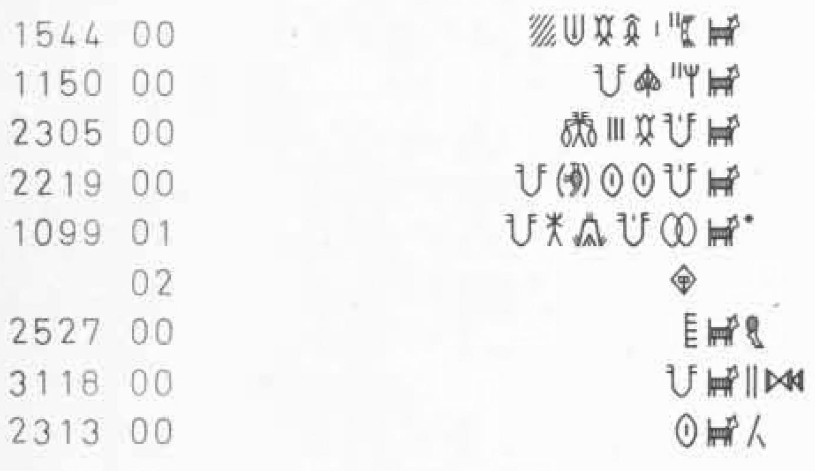
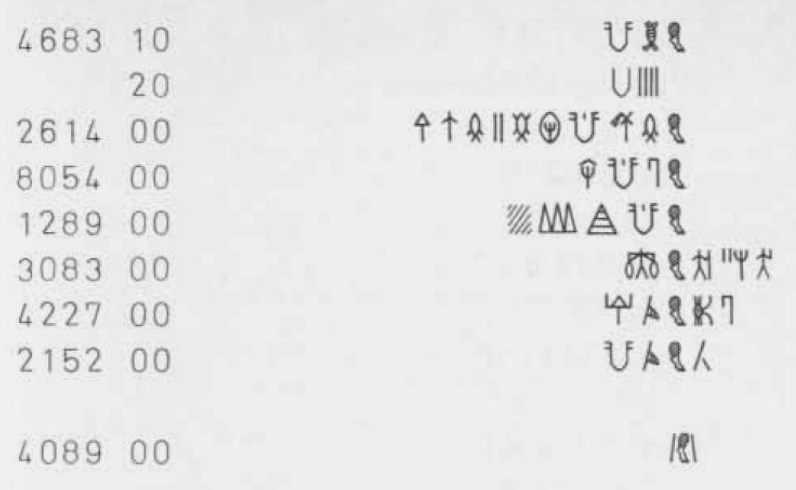
Hindu mythology in the Indus Script
GLYPH #85: WALKING LEG of the WISH-FULFILLING COW, KAMADHENU |  |

Glyph #176: endless, infinite. Glyph #50: Wish-fulfilling cow, Kamadhenu. Glyph #84 cow legs. The four legs
of Kamadhenu represent the four vedas, and the fundamental elements. Kamadhenu represents endless abundance.

|
ENDLESS PILLAR - THE SHIVA LINGA. Glyph #176: endless pillar. #81 The bird (swan) avatar of god Brahma. In the legend of Jyotirlinga, Brahma had a contest with Vishnu to see which would be first to discover the end of a mysterious flaming pillar of fire. Brahma flew up with his bird avatar (#81), and Vishnu dug down with his boar avatar (#62). Glyph #418 (or glyph #0) specified by Celeste Horner 2024 to extend the 417 glyph system of Mahadevan 1977 by one character. This dot, bullet point, iris, or bindu character • is a null, void, or negative. It represents Shiva's function of annihilation, and the case that the endless linga has no end, so both Brahma and Vishnu failed in their quest to determine the limits. Glyph #219 is Mount Meru with a vertical bisector representing Shiva as the axis of the world. In a contest between Naga serpent Vasuki and Vayu, the wind, a spur was broken off of Mount meru. This became Mount Mandan, the giant churning rod #336 twisted by devas (the gods) and asuras (the demons) during the Churning of the Ocean of Milk. Glyph #343 is a variant of the Shiva symbol #342, the most frequent glyph in the Indus Script. With a short stroke in the center, it represents the Shiva lingam, or the divided Ardhanarishwar half male, half female form of Shiva.
|
Shiva and the pillar of fire, Jyotirlinga
|
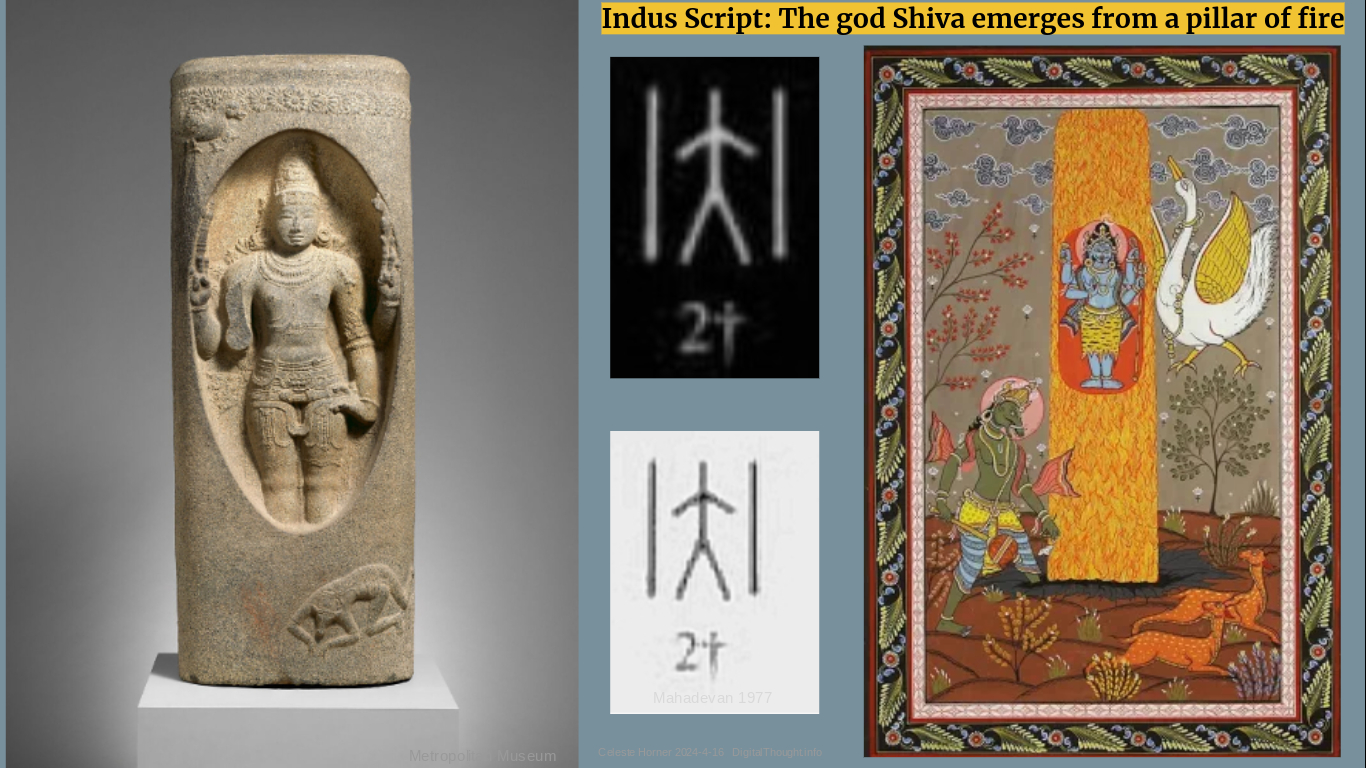
Image credits: Metropolitain Museum and Indianholiday.com
|
GLYPH #2: JYOTIRLINGA - GOD SHIVA EMERGES FROM A PILLAR OF FIRE
Indus Script glyph #2. @ HOW BRAHMA LOST HIS FIFTH HEAD. A dispute arose between gods Brahma and Vishnu over who was the greatest.
Suddenly, an enormous pillar of light and fire blazed up between them. They agreed that whoever could discover the end would be declared superior. Brahma transformed into a swan (#63, #64) and flew upwards. Vishnu in the form of his boar avatar (glyph #62, also Matsya god fish with tusk) dug down towards the netherworld. Both gods searched, but neither could find the end of the pillar. When they met again, Vishnu admitted truthfully that he failed to find the bottom. Brahma, however, lied and produced a flower that he said came from the top. Just as Vishnu was about to bow to him, the god Shiva emerged from the pillar in a rage, and with a blade of grass, sliced off the 5th head of Brahma which had swollen his ego and caused him to lie (#79, headless bird #83, #198, #51, #52). After that, it is was apparent that Shiva was the supreme deity. Jyotirlinga (radiant linga) shrines (#267, #270-283) across India are honored as emanations of this first manifestation of Shiva as a cosmic pillar of light (#61). Shiva Puranas, Chapter 7
Concordance entries for glyph #2: @ | @ ♣ | Glyph #2 info page
|
Image credits: Metropolitain Museum and Indianholiday.com. The Indus Script: text, concordance, and tables. Mahadevan, I (1977)
|
Indus Script glyph #2. @ How Brahma lost his fifth head. A dispute arose between gods Brahma and Vishnu over who was the greatest.
Suddenly, an enormous pillar of light and fire blazed up between them. They agreed that whoever could discover the end would be declared superior. Brahma transformed into a swan and flew upwards. Vishnu in the form of his boar avatar dug down towards the netherworld. Both gods searched, but neither could find the end of the pillar. When they met again, Vishnu admitted truthfully that he failed to find the bottom. Brahma, however, lied and produced a flower that he said came from the top. Just as Vishnu was about to bow to him, the god Shiva emerged from the pillar in a rage, and sliced off the 5th head of Brahma which had swollen his ego and caused him to lie. After that is was apparent that Shiva was the supreme deity. Jyotirlinga (radiant linga) shrines across India honor this first manifestation of Shiva as a cosmic pillar of light.
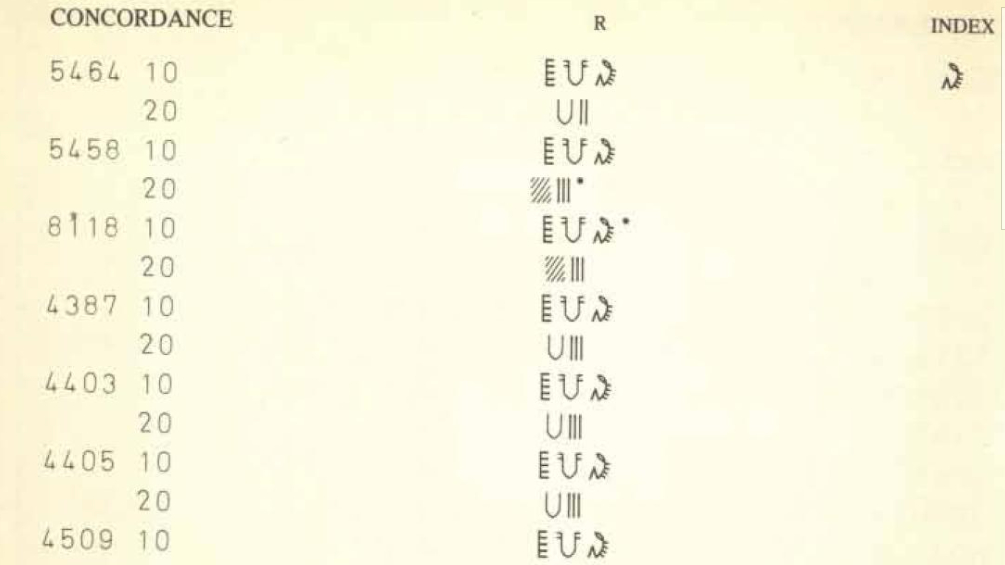
Glyph #48: corpse, spine. Endless - Shiva - Spine. Shiva is the infinite axis of the cosmos
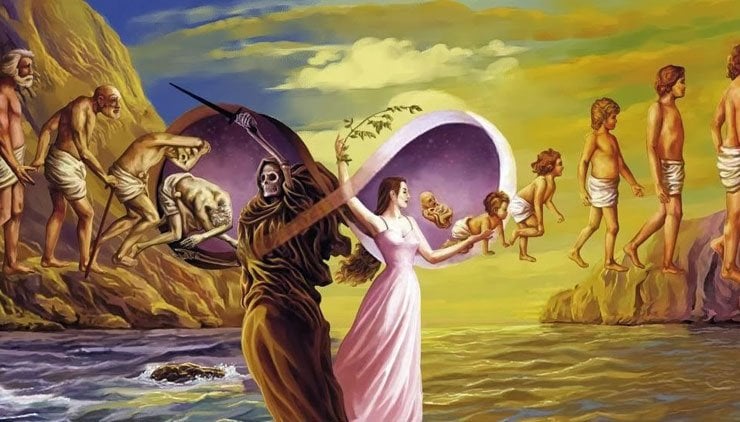

X: crossing over, reincarnation -- an endpoint
The knife, the blade -- an endpoint
The corpse, the grave -- an endpoint
Shiva -- Endless
|
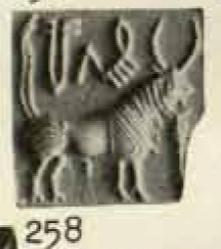
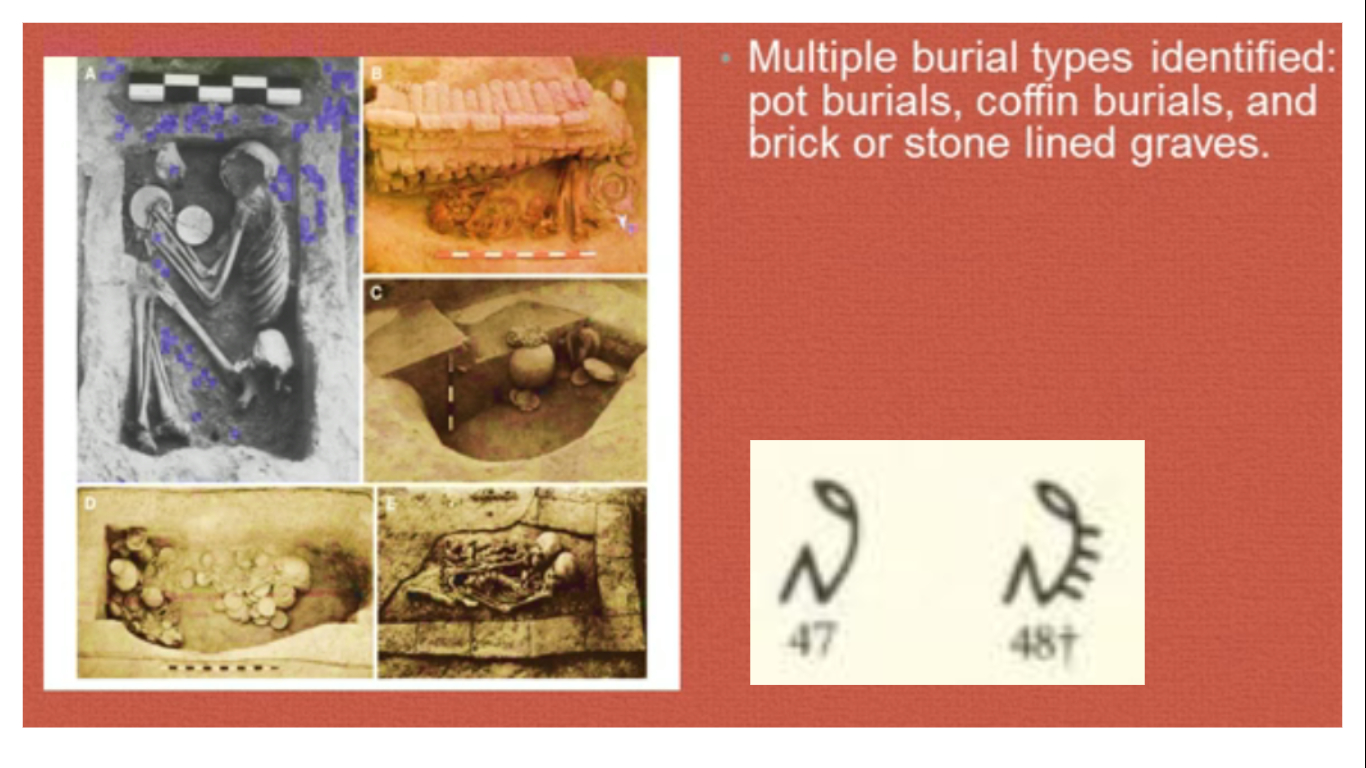
Glyph 48 applied by CCH 2024 to Indus Script discussion by Rig - History Extended 2024
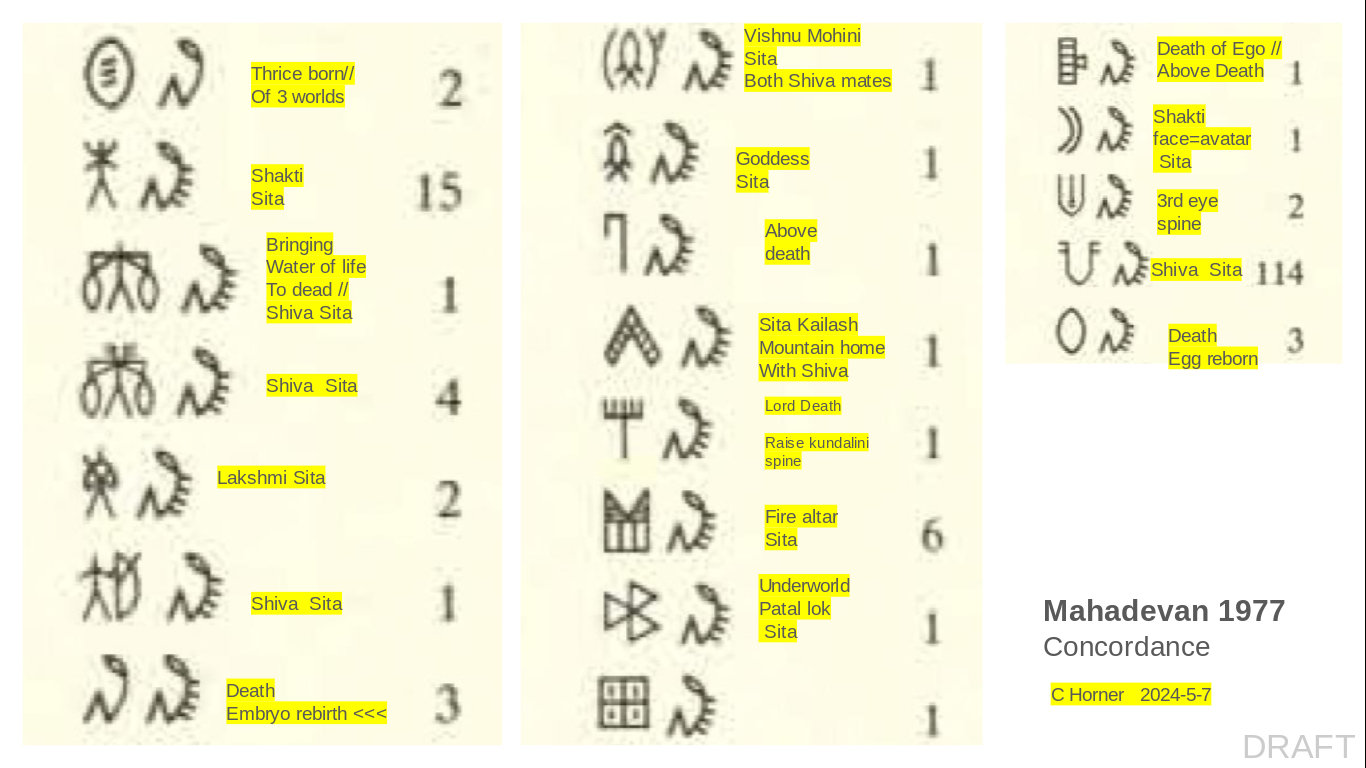
Hindu mythology interpretation of the Indus Script
Celeste Claire Horner 2024
 | Jyotirlinga, the pillar of fire from which Shiva emerged in the legend of How Brahma lost his fifth head |
| U | universal, union.
Third eye tika. Shiva wallowed poison from Ocean of Milk. |
| |||| | Represents the Ganga river falling from heaven. Shiva saved the world by absorbing the impact of the water fall. It flows gently from the top-knot of his hair. |
 |
The lovely divine maidens, celestial musicians and dancers, the Apsaras, who emerged from the Ocean of Milk. Shiva saved the world by swallowing the poison which emerged from the Ocean of Milk so that the Devas could have the Amrita elixir of immortality and other treasures. The goddess Lakshmi, divinity of wealth and fortune, may be represented by this symbol. She has a special connection to Shiva. The Bael tree which sprouts from her hand, and the fruit, which represents her also, are sacred to Shiva. |
 |
The dead. Skeleton man. Corpse in fetal position with spinal vertebrae protruding. Death of Shiva's wife Sita in a sacrificial fire. The dead in a fetal position in anticipation of reincarnation and rebirth. Pashu, the noose that Yam, God of Death, uses to pull a soul from a body.
|
 | E: Endless, deep and high. Represents the Jyotirlinga pillar of fire representing Shiva. The pillar of the cosmos, the gods Vishnu and Brahma failed to find the end of it. |
|||| Represents the depths of the Ocean of Milk
Glyph 171. Represents Ocean of Milk, or lord of the Oceans. 5-prong trident. Also appears as Neptune's 5-prong trident sceptre in Ephesus house. Alamy.
8059: Ψ Trishul. Jyotirlinga I. ||| Tri Murti, TRi. TRIMURTI.
How Brahma Lost His Fifth Head ^
|
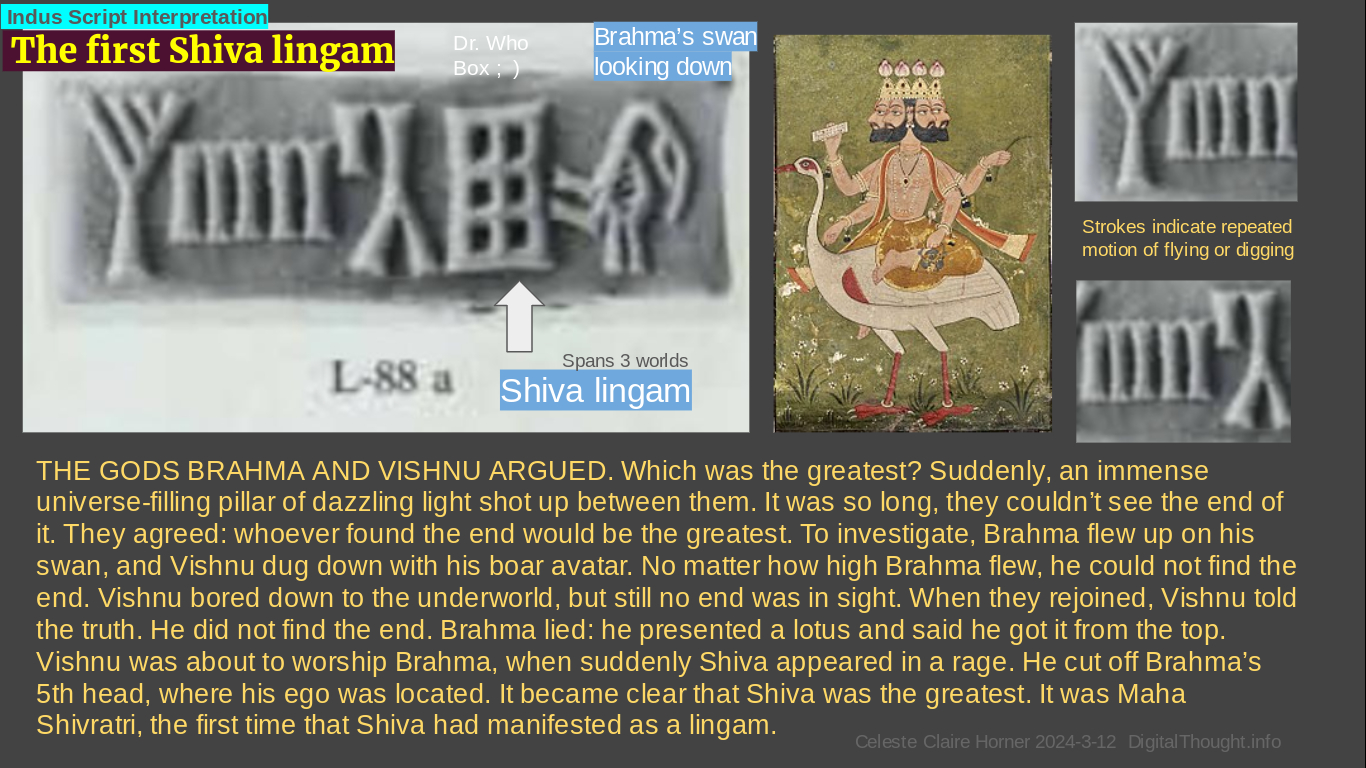
Figure 6: Indus Script with glyphs for a Shiva lingam, the swan of Brahma, and multiple strokes for digging and flying action. CCH 2024-3-12.
The swan's head is bent back like it is looking down from the tall tower, has lost its head, is dead, or ashamed. The head looks like the Egyptian hieroglyph for crescent moon, an emblem of Shiva. The upside down Y look like the Eiffel tower. The lingam was an infinite tower.
RELATED INDUS SCRIPT GLYPHS:
Glyphs #2 (Shiva appears in pillar). Glyph #5 (Brahma head). Glyph 79 (Brahma bird avatar looking down). Glyph #83 (Brahma bird avatar with no head). Glyph #198 (5th head of Brahma, 5th block on top of stack of 4).
|
[INDUS SCRIPT HOME]
DRAFT UPDATED 2024-5-18 @12:58 , CREATED 2024-5-18 celeste@digitalthought.info / celeste.horner@gmail.com
|
| |





